How did the different Mutual Fund categories perform in 2014: Part 2

In the first part of this series, we discussed how different categories of equity mutual funds performed in 2014. While equity funds performed strongly driven 30% rise in Sensex during 2014, even some debt funds gave strong returns during this period. Though not very popular with retail investors, debt funds offer a wide range of solutions to a variety of investment needs. In this article we will review the 2014 performance of different debt fund categories.
Liquid Funds
Liquid funds invest in money market instruments for very short durations. Investors can park their excess cash in liquid funds as an alternative to their savings bank account. Liquid funds gave on an average of nearly 8.75% return in 2014 which is much higher than the interest rate that savings bank would offer. The chart below shows the annual returns of liquid funds from 2012 to 2014.
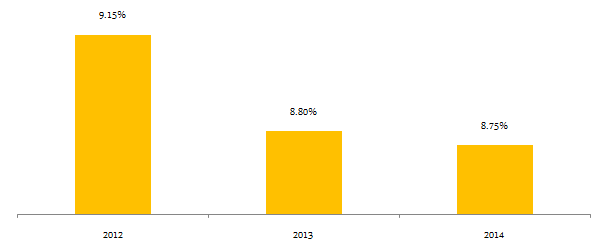
Ultra Short term bond funds (also known as Liquid Plus)
Ultra short term bond funds, previously known as liquid plus funds, invest in very short term bonds. While the duration of the underlying securities in Ultra Short term bond funds are longer than liquid funds, the residual maturities of these securities rarely exceed 1 year. These funds are suitable for investors, who want to hold their investment for a period of 1 to 9 months. The average returns of ultra short term bond funds in 2014 was slightly higher than that of liquid funds. The chart below shows the annual returns of ultra short term bond funds from 2012 to 2014.
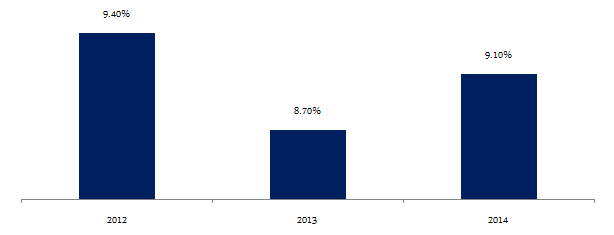
Short Term bond funds
Short term bond funds invest in fixed income securities that are longer in the duration than the portfolio of liquid or ultra short term bond fund, but shorter in duration than the portfolio of income funds. The average maturity of securities in short term bond funds is less than three years. These funds are suitable for investors, who want to hold their investment atleast for a period of 1 year. Short term bond funds gave average return of 10.6% returns in 2014. Investors should note that short term bond funds carry some amount of interest rate risk, even though the risk is on the lower side compared to income funds or gilt funds. The chart below shows the annual returns of short term funds from 2012 to 2014.
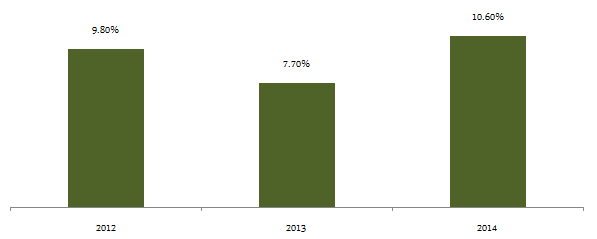
Income Funds
Income funds invest in long duration government and corporate bonds. These funds carry significant interest rate risk. Therefore, it is suitable for investors with longer time horizon and higher risk tolerance. Investors need to time their entry and exit, into and from these funds to get the maximum returns. Income funds are suitable when the interest rates are peaking, so that investors can benefit from the accrual of higher yields and also the capital appreciation of the bonds, when interest rates decline. The average return of income funds in 2014 was 13.2%, benefitting from the moderation of 10 year G-sec yields. The chart below shows the annual returns of income funds from 2012 to 2014.
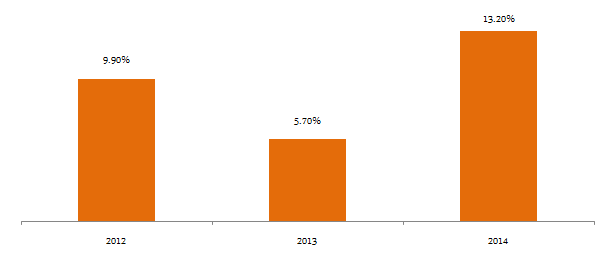
Gilt Funds
These funds invest in Government bonds of medium to long durations. Though gilts do not have any exposure to credit risk, but the exposure of Gilt funds to interest rate risk is the highest among all debt fund categories. Higher the average duration of the gilt fund portfolio, higher is the interest rate risk. Gilt funds gave high returns in 2014, helped by the softening of government bond yields. These funds are suitable for investors who are ready to take interest risk, by timing their entry and exit from these funds. The chart below shows the annual returns of gilt funds from 2012 to 2014.
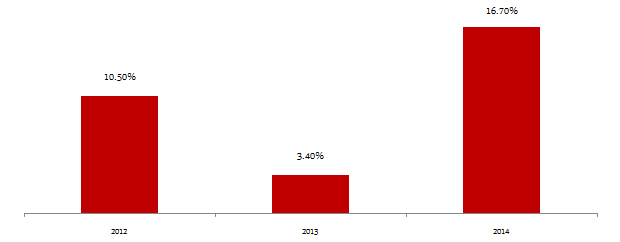
Monthly Income Plans
Monthly income plans (MIPs) are debt oriented hybrid funds. More than 75% of their portfolio is invested in fixed income securities, while 5 – 25% of the portfolio is invested in equities. These funds aim to generate income from the fixed income securities, with the equity kicker for long term capital appreciation. Further, these funds aim to distribute regular dividends to the investors. These funds are suitable for investors with low to moderate risk tolerance, who want regular income along with some capital appreciation. The average return of Monthly income Plans in 2014 was 25.3%, helped in a large part by strong equity performance in 2014. The chart below shows the annual returns of MIPs from 2012 to 2014.
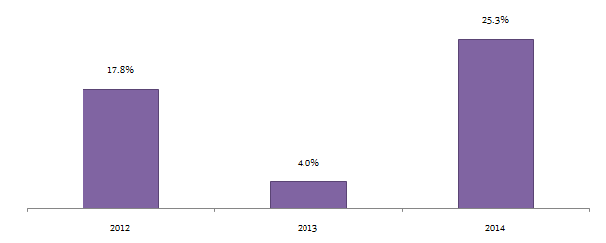
Conclusion
In this article, we have reviewed the average performance of different debt fund categories. Investors should define their investment objectives clearly and if required consult with their financial advisors before investing in these funds.
Queries
-
What is the benefit of mutual fund STP
Aug 29, 2019
-
How much to invest to meet target amount of Rs 2 Crores
Aug 26, 2019
-
Can I achieve my financial goals with my current mutual fund investments
Aug 24, 2019
-
Can you tell me return of various indices
Aug 19, 2019
-
What would be the post tax return on different investments
Aug 18, 2019
-
Which Principal Mutual Fund scheme will be suitable for my retirement corpus
Aug 16, 2019
-
What is the minimum holding period for availing NCD interest
Aug 4, 2019
Top Performing Mutual Funds
Recommended Reading
Fund News
-
Kotak Mahindra Mutual Fund launches Kotak Nifty200 Value 30 Index Fund
Jan 15, 2026 by Advisorkhoj Team
-
Bandhan Mutual Fund launches Bandhan Silver ETF FOF
Jan 12, 2026 by Advisorkhoj Team
-
Bandhan Mutual Fund launches Bandhan Gold ETF FOF
Jan 12, 2026 by Advisorkhoj Team
-
The Wealth Company Mutual Fund launches The Wealth Company Gold ETF FOF
Jan 9, 2026 by Advisorkhoj Team
-
Mahindra Manulife Mutual Fund launches Mahindra Manulife Innovation Opportunities Fund
Jan 9, 2026 by Advisorkhoj Team














